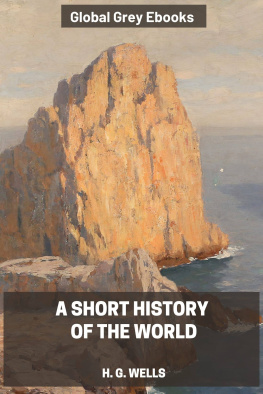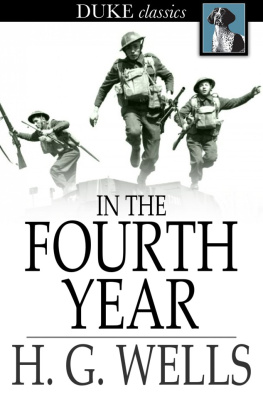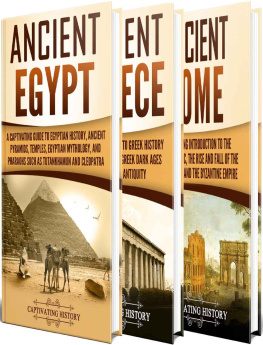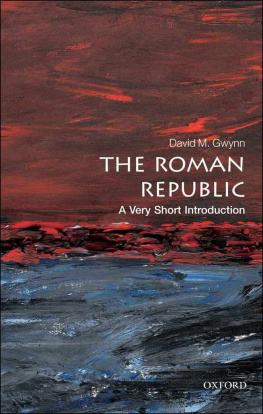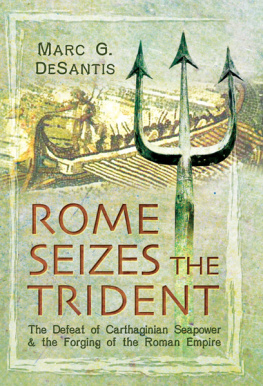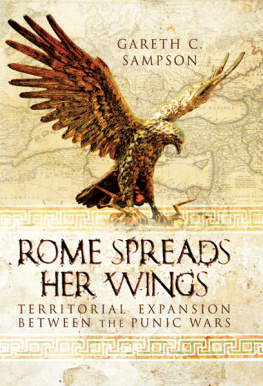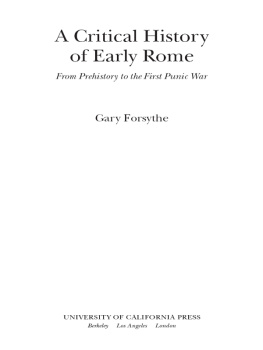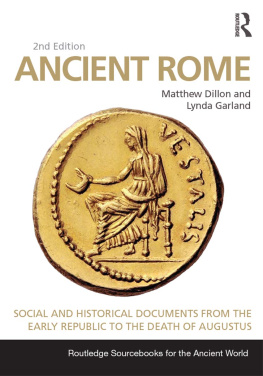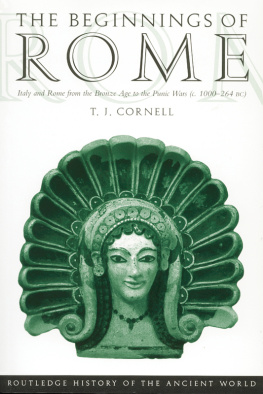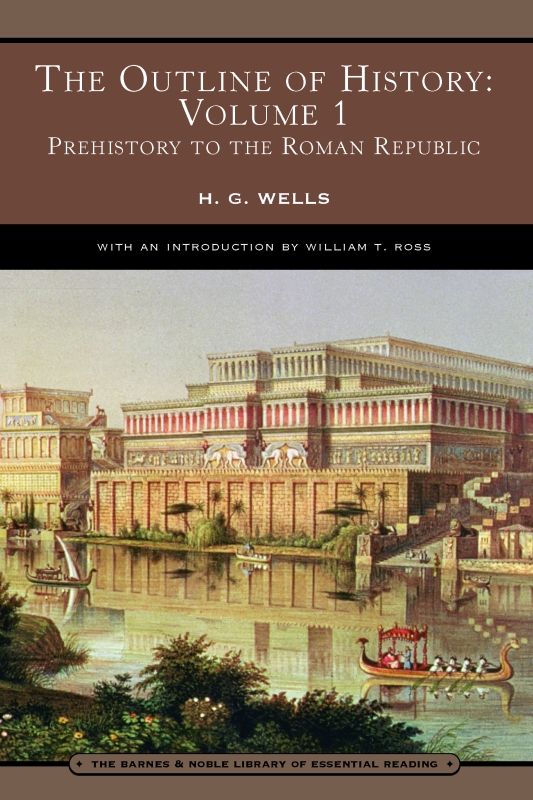
Table of Contents
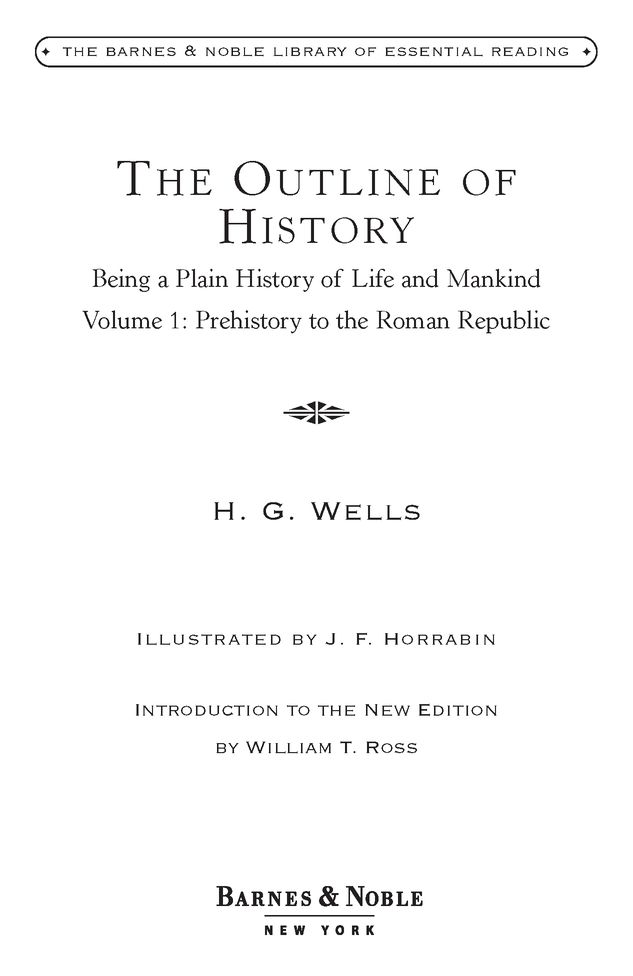
INTRODUCTION TO THE NEW EDITION
H. G. WELLS CONFERRED UPON THE OUTLINE OF HISTORY A SUBTITLEBeing a Plain History of Life and Mankindthat is probably more indicative than the main title of what the work really is. For to call a work of over one thousand pages and five hundred thousand words an outline betrays our common notion of the term. But if plain means plainly or clearly written so a general reader can understand it, and if life and mankind means it is a history of the beginnings of life on Earth and the subsequent development of the social, political, and economic history of the highest life formthen we have a pretty fair description of Wells endeavor. Written over an amazingly short period of time in 1918-1919 by a highly successful English man of letters, The Outline of History caught on first in Britain and America and then throughout the rest of the literate world, selling in its first decade over two million copies, to highly enthusiastic professional reviews. Wells had started a craze that lasted throughout the 1920s for copycat outlines on every conceivable subject. Coming right after the carnage of World War I, the Outline was neither unduly pessimistic and cynical about the human condition nor Pollyannaish about humanitys future. Instead, it pretended to offer an account of the development of the worlds civilizations up to the present, trying to convince its readers that an enlightened future depended on a clear, unprejudiced view of the past. Many readers must have been convinced. Even twenty years after its initial publication, when it was in its sixth edition, The Outline of History and its author were well enough known that in the film The Maltese Falcon, Sidney Greenstreets malevolent character can tell Sam Spade (Humphrey Bogart) that the story of the Falcon is true, though he will not find it in Mr. Wells History.
H. G. Wells was by 1918 perhaps the best-known writer in the English-speaking world. His name may still be the most recognizable of any authors of his generation, thanks mostly to his enduringly popular science-fiction novels, such as The War of the Worlds (1898). Novelist, polemicist, scientific popularizer, journalist, socialist, futurist, and advocate of world government, birth control, and other progressive measures, H. G. Wells had raised himself from humble beginnings to a life of international celebrity and financial success. Born in 1866, he achieved early success with his science-fiction romances, and by 1918 had solidified that popularity and increased his literary reputation with such serious realistic novels as Tono-Bungay (1909). Wells was largely self-taught though he had attended a teachers college where he studied under the great T. H. Huxley, Darwins so-called bulldog, the most prominent public apologist for the theory of evolution. Like his mentor, Wells was an unabashed progressive, convinced that the world could be understood without recourse to revelation or mythical narratives, that science ultimately could explain the material world, and that a dispassionate scientific attitude toward human endeavor was actually essential for prosperity and, as years went on, even for the survival of the species. Occasionally Wells fame lapsed into infamy, for he was something of a philanderer, fathering at least two children out of wedlock, one by the novelist Rebecca West rather quietly, and the other not so quietly by Amber Reeves, the young daughter of a fellow Fabian socialist. When Wells died in 1946, there was almost universal agreement that, in the words of Dora Russell, the philosopher Bertrand Russells much younger second wife, Wells had been, along with George Bernard Shaw and her husband, one of the great emancipators from Victorian orthodoxy.
Why then did Wells write The Outline of History? Certainly not because he foresaw the immense financial bonanza it would become for him. In fact, he was on a mission. If future conflagrations like the Great War were to be avoided, a fundamental reordering of the political system had to be undertaken. The world would have to adopt an international system far more radical than Woodrow Wilsons proposed League of Nations. And mankind could only unite in such a system if it had a better idea of its common history. A universal history, as Wells called it, would break down the old nationalistic, ethnic, and racial divisions by plotting, from the beginnings of the planet, the human races common heritage. This may sound far too utopian, but Wells realism should be stressed. He did not think a magic bullet was found in history. Instead, he thought of history with its progression of thought and possibility of beneficial action as essential if humanity were to advance. In short, history will emancipate (to use Dora Russells word) one from mere sectarian or local prejudices and provide an enlightened review of humanitys possibilities to help shape a better future.
To further guarantee that The Outline of History would have the desired impact, the amateur Wells enlisted many experts to help him. His biggest aid was probably the magnificent eleventh edition of the Encyclopaedia Britannica, a work that remained justly famous as far superior to both its predecessor editions and its successors throughout most of the century. Wells lists over fifty specialists in his introduction, and to the principal four he provided not only handsome remunerations but also the honor of having their names listed on the title page (following with the advice and editorial help of ). Wells was justifiably proud of his omnivorous knowledge, however he was not only humble enough to seek advice, but shrewd enough to supply his volumes the extra pedigree that only professional and renowned scholars could provide.
What then did the early readers of the Outline find when they opened the first volume of Mr. Wells latest work? What they did not find was another version of what Wells called the King and Country history, his term for the narrowly nationalistic (and chauvinistic) history taught in the schools. For Wells, this kind of history, with its emphasis on one countrys heroes and battles and accomplishments, was part of the problem. Indeed in the first volume of the Outline, the original British and American readers found a history that began long before their respective nations came into existence. Readers might have been used to such a looking back, but only in a limited way. If they were better schooled they would expect to find a treatment of classical Greece and Rome and of biblical history. The not-so-well-trained would only be aware of some Bible stories. In the Outline they found both classical and Old Testament history covered, to be sure, but placed within a much wider scope. The Greeks were picked up, for example, when their ancestors first ventured onto the Balkan peninsula. And their ancestors were traced back to their first arrival in Europe. The Hebrews were made to share their geographic territory with all the other peoples of the region, and their relative unimportance at the time was carefully noted.
In short, Wells insisted on a far different idea of historical contextualization than had usually obtained in the past. The reader would not only find more space given to the ancient civilizations that came into contact with the Greeks and Hebrews, but also to civilizations completely remote from them. Thus Chinese culture is given its due, and Confucius comes off as one of the most admired ethical teachers of the early periodas does Buddha. And Asoka (264-227 BC), an Indian ruler whom Wells says is the first leader to abandon warfare as a tool of state, is valued and honored as perhaps no other political leader in the entire volume.
Next page


